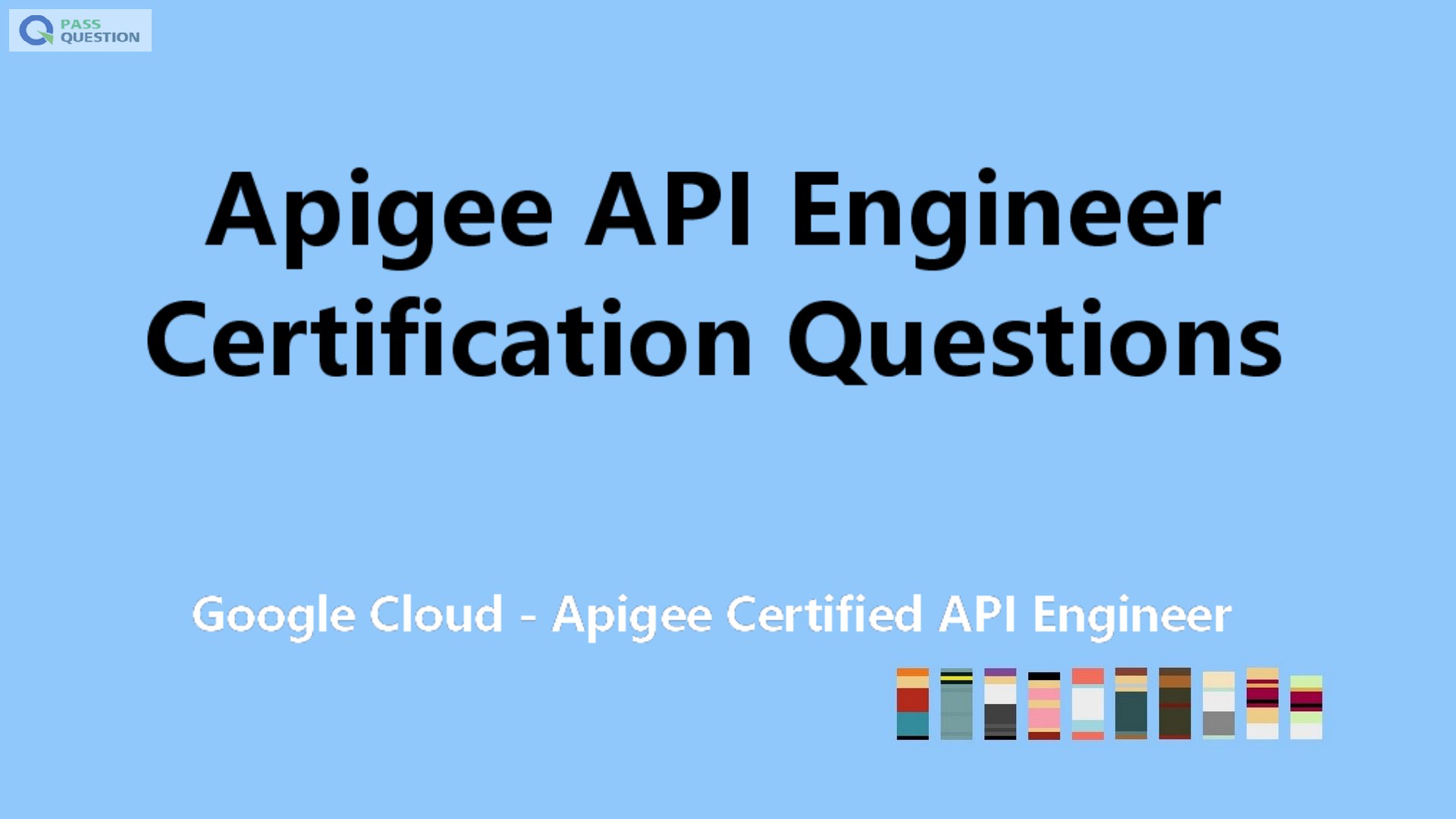Apigee API Engineer Certification Questions - Google Cloud - Apigee Certified API Engineer
Google Cloud - Apigee Certified API Engineer exam is a hot Apigee Certified Professional certification test,PassQuestion provides the latest Apigee API Engineer Certification Questions to help you know what will occur in the real Apigee API Engineer test. We regularly updated Apigee API Engineer Certification Questions to help you save your time and money and you can get good marks in your Apigee API Engineer certification. PassQuestion ensures you can pass your Google Cloud - Apigee Certified API Engineer exam successfully in your first attempt.

Google Cloud - Apigee Certified API Engineer Exam Description
Apigee Certified Professionals design and develop robust, secure, scalable API solutions that drive business objectives. This accreditation from Google certifies that you demonstrate a superior level of proficiency using Apigee products, processes, and practices, and that you can use the technology to help transform businesses and meaningfully impact the customers they serve.
An Apigee Professional API Engineer designs, builds, and maintains API proxies. The API Engineer responsibilities include cross-cutting business concerns like authentication, authorization, monitoring, logging, governance, and documentation. API Engineers also consider API design features like consistency, usability, and versioning. Finally, the API Engineer measures and drives success of the API program and is responsible for the documentation, promotion, and evangelism of its products.
The Apigee Certification program is designed to demonstrate your:
check Knowledge of up-to-date tools and technical strategies
check Relevant skills, knowledge, and experience
check Ability to take on interesting and complex projects
Exam Information
Exam Name: Google Cloud - Apigee Certified API Engineer
Number of Questions: 110 Questions
Length: 120 minutes
Pass Score: 70%
Cost: $200
Languages: English
Apigee API Engineer Certification Exam Objectives
Section 1: Designing APIs
1.1 Data Modeling.
- Using consistent and intuitive naming across all APIs
- Modeling resources based on business concepts rather than internal terminology
1.2 Designing APIs.
- API-first approach
- Designing API resources and actions from consumer point-of-view
- Understanding API versioning models and breaking changes
- Determining appropriate level of orchestration for efficient API request flows
- Scoping access controls
1.3 RESTful Design.
- Choosing meaningful and consistent resource names
- Knowing when to push REST or accept legacy designs
- Using HTTP verbs appropriately and consistently
- Designing RESTful URI paths
- Choosing between path, payload, headers, and query parameters
- API paging design
1.4 Driving API consumption.
- Documenting APIs
- Creating and using OpenAPI Specifications
- Building a community for API programs
Section 2: Developing, implementing and securing APIs
2.1 Implementing API proxies on Apigee Edge.
- Implementing proxy and target flows
- Methods for calling backend services
- Fault handling and error conditions
- Mediation strategies, including:
- SOAP to REST
- Converting between XML and JSON
- Extracting data from payloads
- Mashups
- Using caching to improve latency and reduce backend load
- Extending functionality using code
- API configuration using key-value maps and target servers
- API logging and custom attributes for analytics
2.2 API Security.
- Securing APIs via OAuth, SAML, basic authentication, and IP-based access control
- Protecting against traffic spikes
- Detecting content-based attacks
- Transport layer security via one-way and two-way TLS
- Data masking
- Role-based access control for Edge
2.3 API Testing & Performance Analysis.
- Understanding the performance characteristics of policies
- Tracing calls within Edge
- Analysis of target and proxy performance
- Implementing API performance benchmarks
- Cache performance analysis and tuning
Section 3: Development Lifecycle and CI/CD
- Automating build, deployment, and configuration
- Automating unit and integration tests
- Implementing static code analysis
- Organization and environment strategies for proxy SDLC
Section 4: Requirements and Business Analysis
4.1 Managing API Products.
- Identifying API products based on business needs
- Configuring quotas
- Extending product functions using custom attributes
4.2 Requirements Analysis.
- Challenging legacy assumptions
- Writing API user stories
- Decoding business stories and finding resources and properties
- Writing consumption-based API test scenarios
- TOP 50 Exam Questions
-
Exam
All copyrights reserved 2025 PassQuestion NETWORK CO.,LIMITED. All Rights Reserved.

